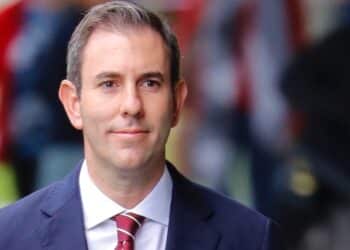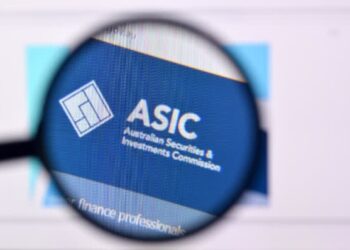New committee chair and Liberal MP Andrew Wallace asked the regulator to comment on advice industry correspondence that indicated “financial advice licensees which are SMEs are unfairly required to pay high levies that have risen due to misconduct by large licensees”.
The regulator stated that the current industry funding model dictated a graduated levy based on adviser numbers, and that the largest 20 licensees in the sector that employed 31 per cent of the adviser population had paid 31 per cent of the supervisory costs the sector had attracted for the 2020 financial year.
“Based on the leviable amount for the ‘Licensees that provide personal advice on relevant financial products to retail clients’ sector, the 20 largest financial advice licensees were charged approximately $17.3 million in 2019-20,” ASIC said.
“This represents approximately 31 per cent of financial advice related industry levies and 5.4 per cent of ASIC’s total regulatory costs of $320.3 million for the 2019-20 financial year.
“The remaining licensees were charged approximately $38.4 million in 2019-20. This represents approximately 69 per cent of financial advice related industry levies and 12.1 per cent of ASIC’s total regulatory costs of $320.3 million for the 2019-20 financial year.”
Mr Wallace further questioned whether ASIC was able to track how many licensees in the sector were SMEs, and approximately what proportion of supervisory costs were exhausted by which licensee.
“ASIC has not adopted an SME definition for the purposes of the ASIC industry funding model and, as such, we are not able to provide a percentage of the financial adviser population that works for SMEs,” the regulator said.
“ASIC does not track the costs to regulate each individual entity separately. The number of financial advisers employed by an advice licensee is currently the best proxy for ASIC’s regulatory effort.”
The regulator said there was no provision in the legislation that mandated the industry funding model for ASIC to allocate supervisory costs based on the degree of misconduct at each licensee.
“The ASIC industry funding model methodology for calculating costs is based on the Australian Government Cost Recovery Guidelines and is prescribed in the relevant Acts and Regulations,” the regulator said.
“For the ‘Licensees that provide personal advice on relevant financial products to retail clients’ subsector, the number of advisers as at 30 June 2020 is prescribed under the model as a proxy for ASIC’s regulatory effort in this sector.
“ASIC’s focus is on using the resources allocated to us efficiently, by prioritising the most significant threats and harms in our regulatory environment. In our enforcement work, we look to take efficient and effective enforcement action, prioritising cases that have a high deterrence value and those responding to egregious misconduct.”
The comments come as levy costs to the advice sector for the 2020 year rose by 60 per cent from their original estimates in June, with ASIC saying the constraints of the funding model make it exceedingly difficult to estimate costs from year to year.
Advice industry bodies have called for the funding model to be reformed to take account of large institutions that have exited the sector following the reputational fallout of the royal commission, which has also led to a number of legacy misconduct cases being taken to court by the regulator.




One major flaw is that cases which are actioned for breaching personal advice by those who aren’t licensed, but the costs are recovered from licensed advisers. This is not in the spirit of the law. If an unlicensed provider is pursued, the costs should be covered by the government, not those who follow the licensing regime (eg Westpac case about rolling over into BT)
Congratulations to MP Wallace for asking the question. Bottom line is that action is required if we are to remain in business. ASIC acknowledge that truth and address their funding, the costs etc. Advisers have no recourse to change the system which is grossly unfair.
ASIC allocate court imposed fines and penalties to groups like consumer activist group Choice and financial literacy programs. Hard to believe, but it is very true.
It is isn’t about big verses small. It is ASIC spending a fortune in legal fees taking banks to court, winning cases and any penalties going directly into consolidated revenue.
All legal costs should be offset against penalties before the government receives any revenue.
More fees for no service. No opt in, just threat of deregistration if you refuse to pay.
““ASIC’s focus is on using the resources allocated to us efficiently, by prioritising the most significant threats and harms in our regulatory environment.”
What, like closing down an innocent school banking program – https://www.spectator.com.au/2021/05/why-are-bureaucrats-against-teaching-children-to-save/
ASIC, you really are the pits. If the damage you do wasn’t so significant, your would be laughable.
This is ASIC and Govt admit they are using SME adviser levies to fund actions against the exited institutions, who pay zero levy. This is the definition of “egregious misconduct”.
The public gets the benefit of this so-called ‘regulatory oversight’ but the advice community gets stung with the bill – it is unethical and immoral
it is paid for by SMEs + look at the flow from AFSL fees to FP practices and you will findeth. %’s do not matter, it is clear a review is required plus a claw back for gouging !
Charging a fee to the innocent for the actions of the guilty. So much for ethics.
ASIC has no ethics ……
ASIC’s costs need to be offset by the fines they have imposed.
Advisers are effectively Court Case Legal Funders for ASIC.
Zero risk to ASIC, zero benefit to Advisers levies.
Advisers get zero benefit from the $$$ Millions ASIC have imposed in fines of misconduct.
What a freaking sad joke Frydenberg, ODwyer and the LNP with ASIC have forced on Advisers.
Disgusting LNP, Frydenberg and ASIC.
Why hasn’t this year’s draft CRIS been issued – we have no idea what ASIC are estimating next year’s levy to be.
They can’t estimate until they know how many more advisers they force out of business. Only then can the remaining advisers know how much more they need to pay in the government’s #ASICtax
Also they might not know the full cost of moving the new boss and his tax returns – or are they not doing this sort of thing anymore?